Cucumbers are fun and easy to grow. As a beginner, you can always begin with cucumbers. These prolific growers will only provide positive results if you provide proper care and maintenance.
Cucumbers enjoy 6-8 hours of sunlight, weekly watering, well-drained and nutrient-rich soil, regular fertilizing, and warm temperatures. To improve their development, maintain proper depth and spacing, consider trellising, prune them regularly, and monitor for pests and diseases.
There are a lot of things to learn about successful cucumber growth. In this guide, I will share all the care tips you need to know to succeed with cucumber plants.
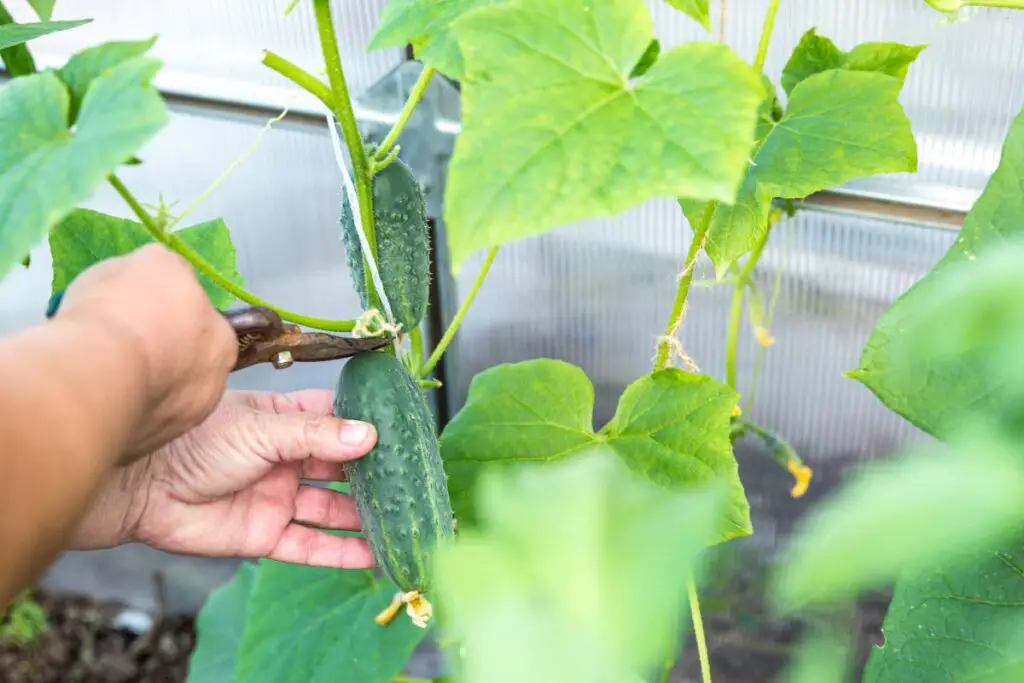
1. There are two options for planting: Directly sow the seeds in the ground or start them indoors
While growing the cucumbers, you can directly sow the seeds in the ground or start them indoors and transplant them later.
Many gardeners directly sow the seeds outdoors because transplantation can go wrong sometimes.
Cucumber roots do not like to be disturbed.
If anything goes wrong while transplanting, the plant will receive a transplant shock and take much time to recover.
When you start the seeds indoors, sow them 4 to 6 weeks before the last frost and keep them under a controlled environment.
If you live in a colder zone with a shorter growing season, starting seeds indoors can provide you with an extended growing season.
When transplanting the seedlings, harden them off for a week and then take them outside.
Whether you transplant the seedlings or directly sow cucumber seeds in the ground, do it 2-3 weeks after the last spring frost.
The ground temperature should be 60 to 75°F.
2. Maintain proper depth and spacing
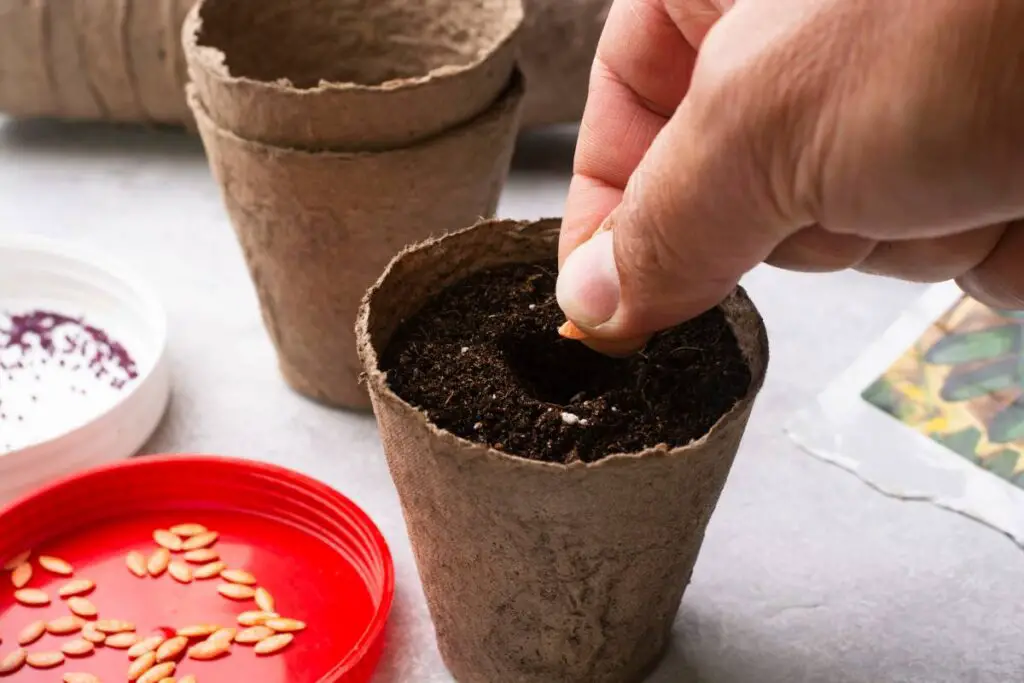
You must maintain proper depth and distance, whether to directly sow the seeds in the ground or transplant the seedlings.
The depth is always ½ to 1 inch for both seeds and seedlings.
Once the seedlings grow, you have to take out the weak ones. So, sow a cluster of 3 seeds every 3 to 6 feet along the row.
After germinating into seedlings, remove the week once, and plant the seedlings 3-6 feet apart. The same is for the transplants.
Several factors affect the spacing:
- If you sow seeds in rows, let the rows be 18 to 24 inches apart, and sow the seeds 10 to 12 inches apart.
- In the hills that are 4 inches tall, maintain 1 to 3 feet of spacing.
- For mounds, sow 3 to 4 seeds per mound and then thin them out to 1 plant per mound.
- If you want trellising, sow the seeds 4 inches apart and the seedlings 6 to 12 inches apart.
The distance can increase or decrease based on the variety you grow.
The bush varieties are compact, but the vining varieties can take up a lot of space. So, keep it in mind before spacing them.
3. Make sure the cucumbers get 6 to 8 hours of sunlight every day
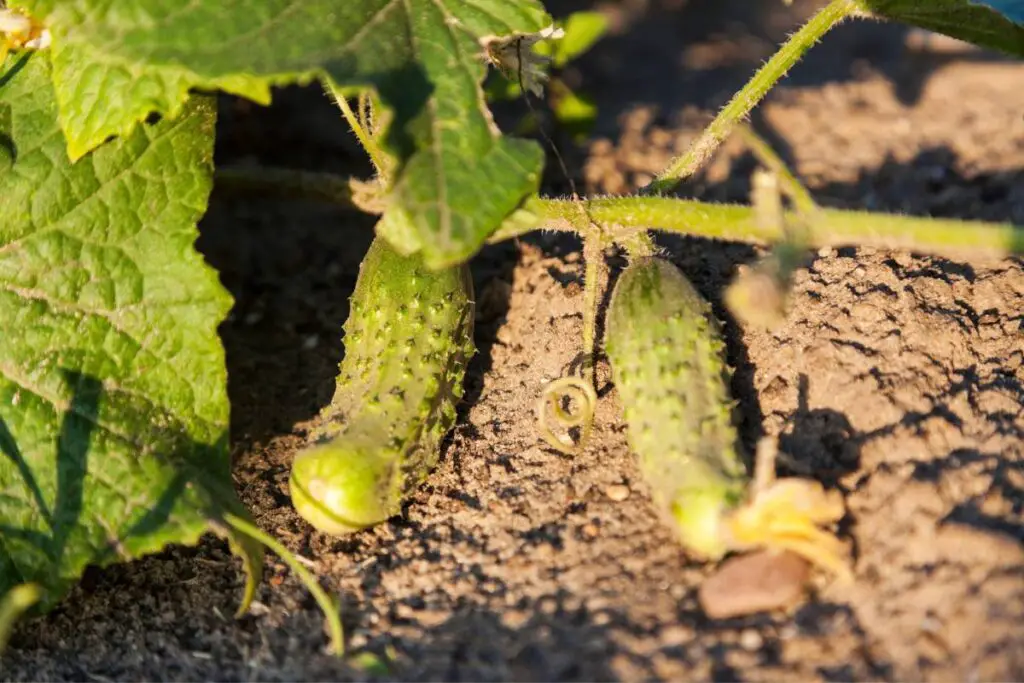
Cucumbers love to grow under bright sunlight.
They thrive best when they receive at least 6 to 8 hours of sunlight daily.
Adequate sunlight allows better photosynthesis, encouraging optimal growth and flower and fruit development.
It also helps in producing chlorophyll which allows good production and leaf color.
For optimal growth of cucumbers, select a proper location in your garden that receives adequate sunlight.
However, intense sunlight can be extremely harmful.
Intense sunlight in the summer, accompanied by high temperatures, leads to heat stress and frequent dehydration.
So, water the plant more often to keep the plant cool and hydrated.
Put up a cloth shade during the hottest time of the day in the summer to keep the plants from heat stress and flower drops.
4. To keep your plants healthy, water them only when the top layer of the soil (1-2 inches) is dry
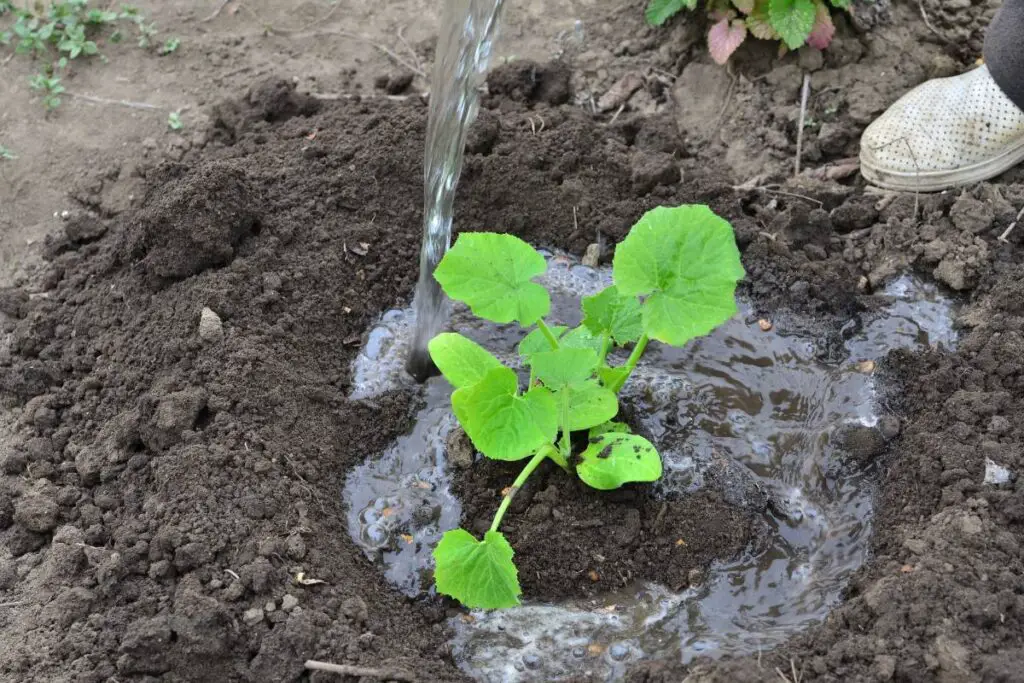
Cucumbers love moisture, and without it, these plants won’t survive.
Cucumbers are 95% water, and it helps in photosynthesis and chlorophyll for fruit production.
Water the plants every week with 1 to 2 inches of water.
If the weather is too hot, increase the watering frequency.
Water the plants 2-3 times per week with 2-3 inches of water.
Watering too much causes overwatering and rotting.
To avoid it, increasing the gap between the watering leads to underwatering.
This inconsistency can hinder the plant’s development.
The best way to water the plant is to check the soil’s moisture level before watering.
Whenever the few inches have dried, you can water the plant deeply so that it reaches the root level.
If your plant is in a container, water the plant unless the excess drains out of the potholes.
In the garden, consider drip irrigation as it ensures water reaches the roots without getting wasted.
Looking for gardening supplies? We have tested 100's of products before recommending them to you guys. Check out our best pick below:
| Image | Gardening Supplies | Best Price? |
|---|---|---|
 Top
Top Top
Top | Raised Garden Bed Kit | Check On Amazon |
 | XLUX Soil Moisture Meter, Plant Water Monitor, Soil Hygrometer Sensor for Gardening, Farming, Indoor and Outdoor Plants, No Batteries Required | No Results |
 Top
Top Top
Top | 82 Pcs Garden Tools Set and Extra Succulent Tools Set | Check On Amazon |
 | Joeys Garden Expandable Garden Hose with 8 Function Hose Nozzle, Lightweight Anti-Kink Flexible Garden Hoses, Extra Strength Fabric with Double Latex Core, (50 FT, Black) | No Results |
 Top
Top Top
Top | Dual Chamber Compost Tumbler | Check On Amazon |
 Top
Top Top
Top | Sunnyglade Plant Stakes | Check On Amazon |
 Top
Top Top
Top | Organic Cold Pressed Neem Seed Oil | Check On Amazon |
 Top
Top Top
Top | Mighty Mint Gallon :-Insect and Pest Control Peppermint Oil | Check On Amazon |
 Top
Top Top
Top | Scotts DiseaseEx Lawn Fungicide | Check On Amazon |
 Top
Top Top
Top | Jacks Classic 20-20-20 All Purpose Fertilizer | Check On Amazon |
 Top
Top Top
Top | 30,000 Seeds Pollinator Attracting Wildflower Mixture | Check On Amazon |
 Top
Top Top
Top | Survival Vegetable Seeds Garden Kit-Over 16,000 Seeds | Check On Amazon |
5. Grow them in well-drained, loamy, and nutrient-rich soil for optimal growth
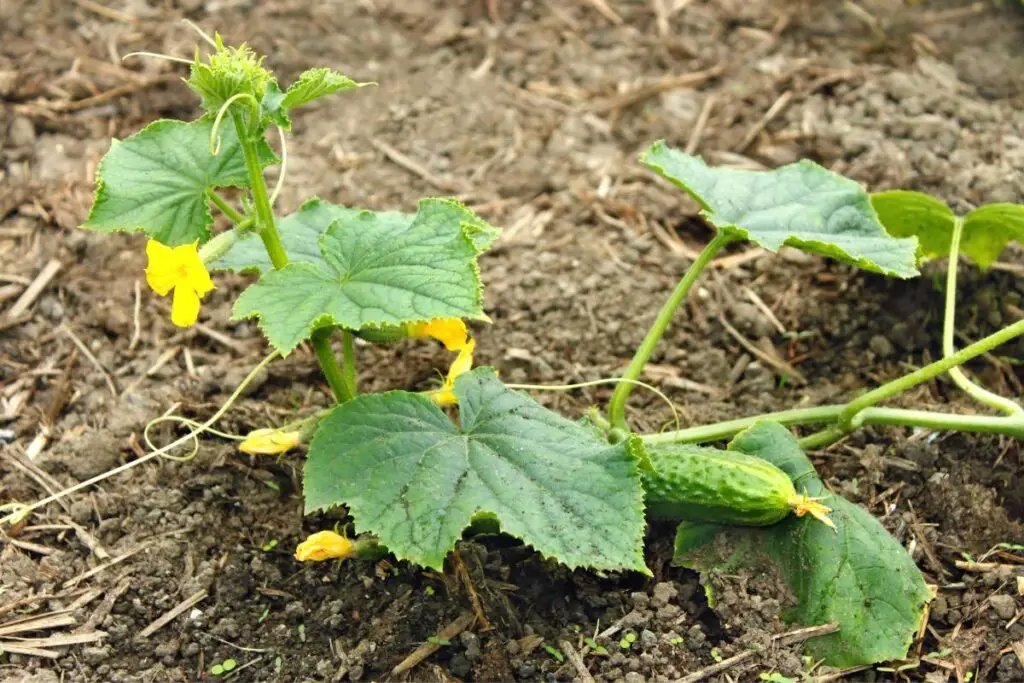
Cucumbers prefer well-drained, loamy, and nutrient-rich soil to survive throughout the year.
Well-drained soil will drain the excess after the roots and plant parts have received enough moisture.
The soil must also be fertile because cucumbers are heavy feeders and need enough nutrition to encourage fruits and flowers.
Adding organic matter to the soil can solve all the issues.
That is why adding organic matter before planting is recommended when you prepare the soil.
Till around 25 to 30 cm of the topsoil, remove the old roots and leaves, the weeds, and break the lumps.
Add organic matter according to the need, mix it with soil well, and then plant the plants.
Another thing to consider is the pH level. Cucumbers need a 6.0 to 6.5 pH level.
If the pH is lower, add acidic elements like line and vinegar and use aluminum sulfate or mild sulfuric acid to adjust the higher pH.
6. Fertilize the plants regularly throughout the growing season
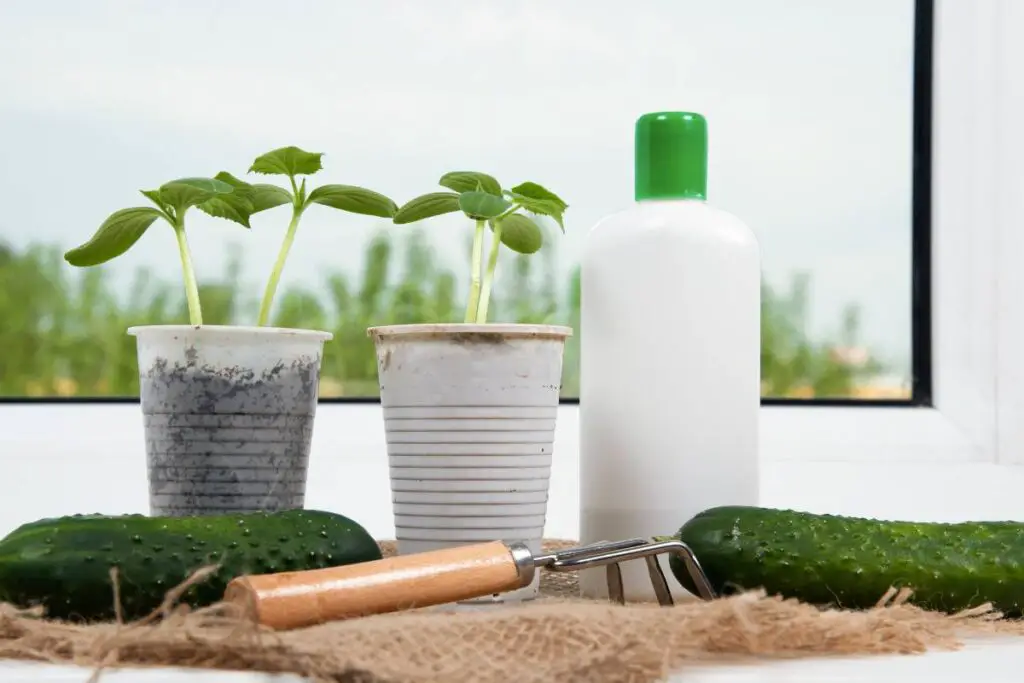
As I said before, the cucumbers are heavy feeders.
They need good nutrients to stay healthy and produce flowers and fruits.
Cucumbers require low nitrogen and high phosphorus and potassium.
Adding organic matter to the soil before planting can add enough nutrients.
But you must also fertilize separately to encourage healthy growth and flower and fruit production.
There are three fertilization stages:
- Before planting, add 50% of dry organic matter to the soil.
- After planting, add mulch to retain the moisture. At this time, add a 2-inch layer of organic matter to the soil.
- When the plant reaches a few inches tall, fertilize with a liquid fertilizer every 2 weeks for 8 weeks. If you use a slow release, apply it every month.
You can use a balanced liquid fertilizer with NPK 10-10-10 or 20-20-20.
I prefer fertilizers with NPK 2-3-6 or 3-6-6 for low nitrogen and high potassium and phosphorus.
When the plant is profusely flowering, stop fertilizing the plants.
7. Warm temperatures and high humidity allow the cucumbers to flourish
Cucumbers are tropical plants and need warm temperatures to survive and produce flowers and fruits.
Cucumbers hate cold temperatures.
If the temperature goes below 50-55°F, remove the cucumbers or cover them with row covers and frost blankets.
Add a layer of mulch for the outdoor cucumbers to prevent the cold temperature from reaching the roots and affecting them.
Cucumbers can withstand temperatures between 32-40°F, but not for too long.
Eventually, they will succumb to frost damage and perish.
Although cucumbers thrive in warm temperatures, they cannot withstand very high temperatures.
To prevent heat stress on your cucumbers, use cloth shade and increase watering when temperatures surpass 90-95°F to shield them from intense sunlight.
Add a layer of mulch to retain moisture around the roots and soil.
If you live in colder zones, grow some cold-tolerant varieties, for example, Socrates, Corinto, Wisconsin, Russian, and Amour.
If you have a shorter growing season, start seeds indoors to receive a longer growing time for them.
For hotter zones, grow heat-tolerant plants like Olympic, Dasher II, Thunder, Beit Alpha, Spacemaster, and Eureka.
As for the humidity, the optimum level is 60% to 70% during the day and 70 to 90% at night.
Powdery mildew can develop due to excessive humidity.
To prevent this, ensure adequate airflow by maintaining sufficient space between plants.
8. Keep the cucumbers healthy through regular pruning
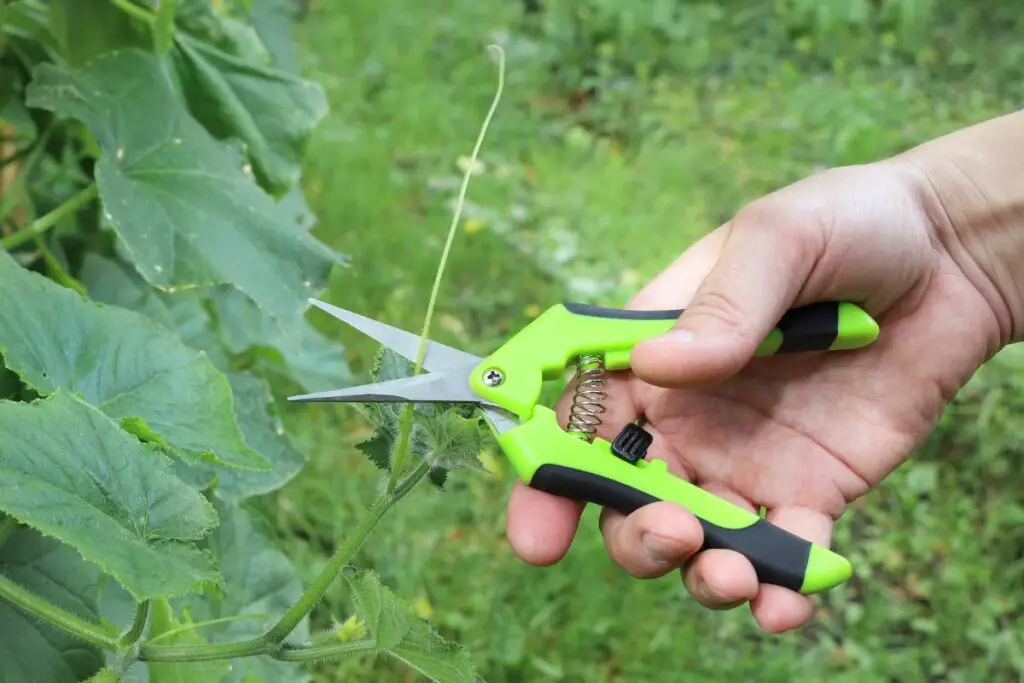
Cucumbers have a crawling habit.
The vines will start crawling all over the ground and overgrow within a few weeks.
If you don’t prune, the plant will use the energy to grow vines and leaves and won’t produce fruits and flowers.
When you prune, the plant starts focusing on making fruits and flowers.
Prune the plants once a week throughout the growing season.
Start pruning when the plant reaches 1-2 feet tall.
Trim the lower leaves, dead or diseased leaves, certain side branches, and any suckers when pruning your plant.
Remove dead flowers and outer leaves as well.
Pruning not only directs the plant’s energy towards producing fruits and flowers, but it also promotes better airflow.
This ensures that the interior parts of the plant and fruits receive ample sunlight.
9. Cultivate cucumbers on a trellis for better growth and development
Since cucumbers have a crawling habit, growing them in a trellis has a lot of benefits:
- With a trellis, you get extra space in your garden to grow more plants.
- Trellis can provide support to the uncontrollable vines and help them crawl upwards.
- When the plant grows upwards, it will grow toward the sunlight. The more sunlight it receives, the better the growth will be.
- The plant will be above the ground. It reduces the chances of pests, soil-borne diseases, fruit rotting, and accidental stumping.
- Since the plant will receive so many benefits, the yield will be naturally higher than those growing in the ground.
- In a trellis, you do not have to bend down to care for or harvest them. Additionally, you receive healthy and clean cucumbers.
- While harvesting, you can easily spot the fruits and pick them.
A-frame trellis is my go-to for growing cucumbers.
Other standard options include Archway, Obelisk, and Chain-link fence.
To prevent mishaps, select sturdy materials that can support the weight of the fruits.
10. Encourage pollination to boost fruit production
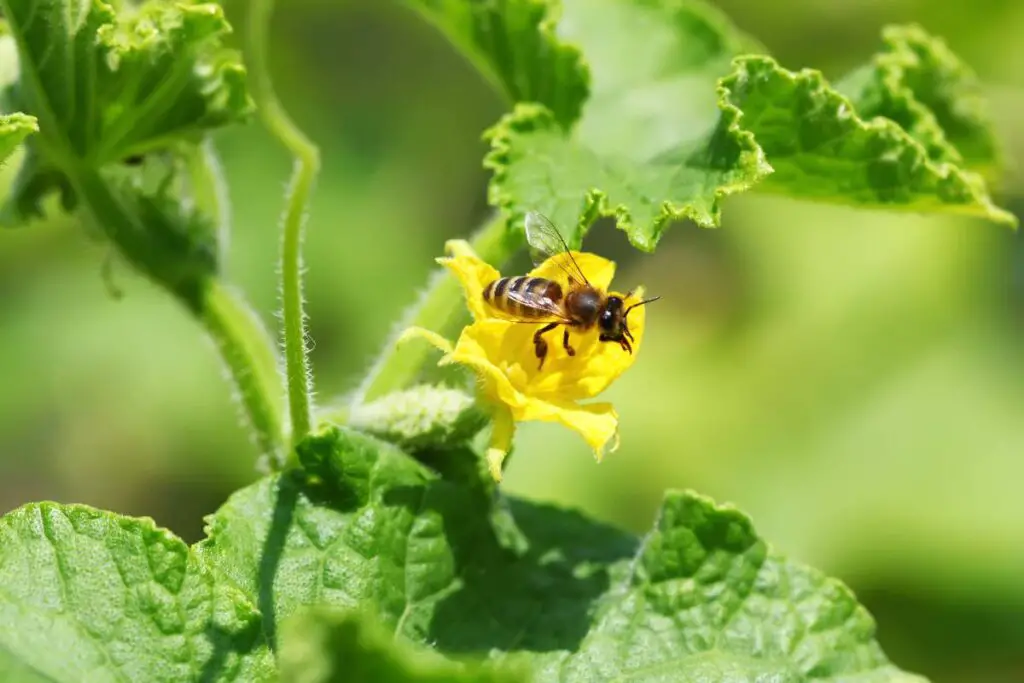
Better pollination will lead to higher yields.
When the flowers pollinate, the female flowers will produce the fruits.
If there is no pollination, you won’t have any fruits.
Several reasons can hinder pollination, for instance, lack of pollinators, flowers dropping due to stress, or lack of male or female flowers.
The monoecious varieties have both male and female flowers.
But the gynoecious varieties have only female flowers.
Grow these two varieties close for cross-pollination. Both plants will benefit.
The gynoecious will have the male flowers from the monoecious variety for pollination.
If the female flowers appear late in the monoecious variety, the gynoecious flowers can help pollinate.
If there is a lack of pollinators, hand-pollinate them.
Use a paintbrush or cotton swab, collect the pollen from the male flowers, and rub it against the female flowers.
11. Harvest the cukes at the right time
Harvesting at the right time is crucial to receiving tasty and healthy cucumbers.
The right time to harvest is within 50 to 70 days of planting.
Harvesting the cucumbers too early can give you a sweet and tasty flavor, but it will be small and extremely crunchy.
If you love crunchy cucumbers, you can harvest them slightly earlier than the right time.
But the late harvest is something you would want to avoid.
When the cucumbers stay in the plant for too long, it starts producing a chemical that makes the fruit bitter.
It is crucial to harvest delicious and flavorful cucumbers at the right time.
After 50 to 60 days of planting, constantly check the cucumbers.
The cukes are ready when they have a bumpy or smooth texture based on the variety and rich dark green with a light green hue.
The size differs based on varieties:
- The picklers mature when they are 2 to 4 inches long.
- The slicing varieties mature when they are 6 to 9 inches long.
- The burpless mature when they are 1 to 1.5 inches in diameter.
Once you have confirmed the maturity of the cucumbers, take a pruner and, leaving 1-1.5 inches of the stem, cut the cucumbers.
Do not tear or twist the cukes.
First, remove one cucumber and check whether it is mature and tastes correct, then remove the other cukes.
Collect them in a basket. Be gentle, as slight bruises can damage the cukes.
12. Store the cucumbers properly for future use
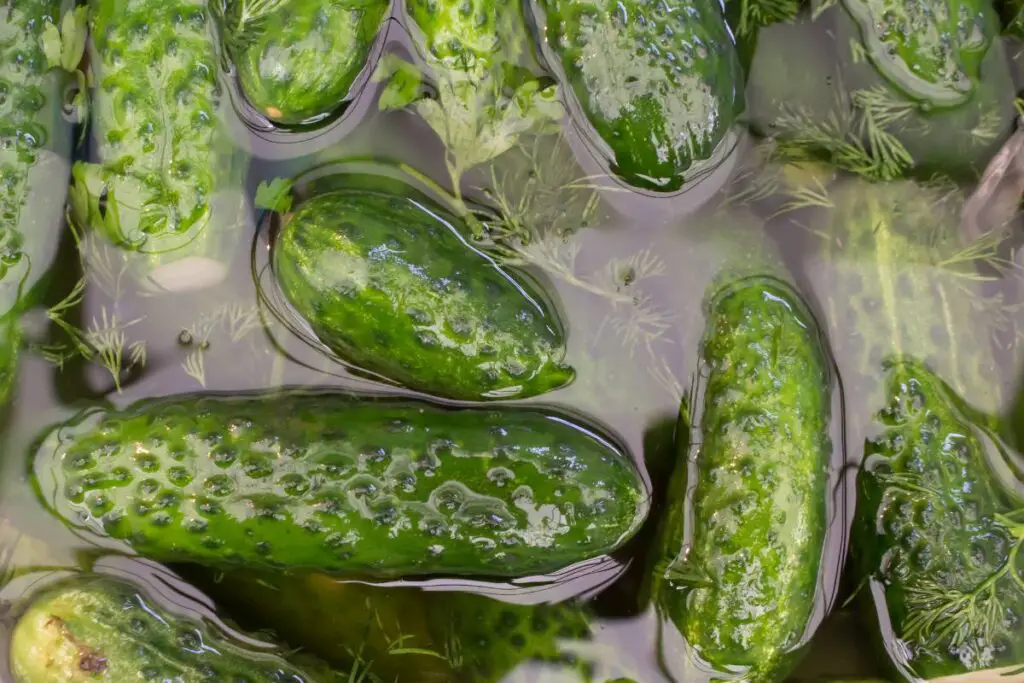
If you have collected too many cucumbers, you can store some for future use to benefit from their vitamins, minerals, and probiotic richness.
There are several methods to store the cucumbers, both long-term and short-term.
Wash and dry the cucumbers, wrap them in a paper towel, and refrigerate them for a week.
To eat the cucumbers raw and fresh, you must consume them within 1-2 weeks.
For the long term, you can preserve them by freezing, pickling, dehydrating, turning them into powder, fermenting, and canning.
When there were no refrigerators, grinders, or dehydrators, people used to store them in traditional ways, for example, in the reservoir, sand, well, and vinegar.
Final thoughts
Cucumbers are easy to grow and don’t bother you with various demands. Please provide them with adequate sunlight, moisture, and nutrients. Grow them in well-drained soil, fertilize them regularly, protect them from extreme temperatures, and prune them regularly.
Ensure they are pollinating well, grow them on a trellis to support the vines, and maintain proper depth and spacing. You can directly sow the seeds in the ground or start them indoors and transplant the seedlings later.
Harvest them at the right time, or you will receive bitter cukes. If you have received too many cucumbers, preserve them for later use. Monitor the plant regularly for pests and diseases and immediately act whenever you spot any infestation.
How many cucumbers can you get from one plant?
There is no exact amount, as it depends on the variety, the growing conditions, and the maintenance you provide. Usually, it can produce around 15 to 20 cucumbers on average.
Why are the cucumbers prickly?
There is no problem if the cucumbers have a prickly texture. It is the variety you are growing. Some of them have a smooth texture.
Reference: Cucumber Wikipedia
